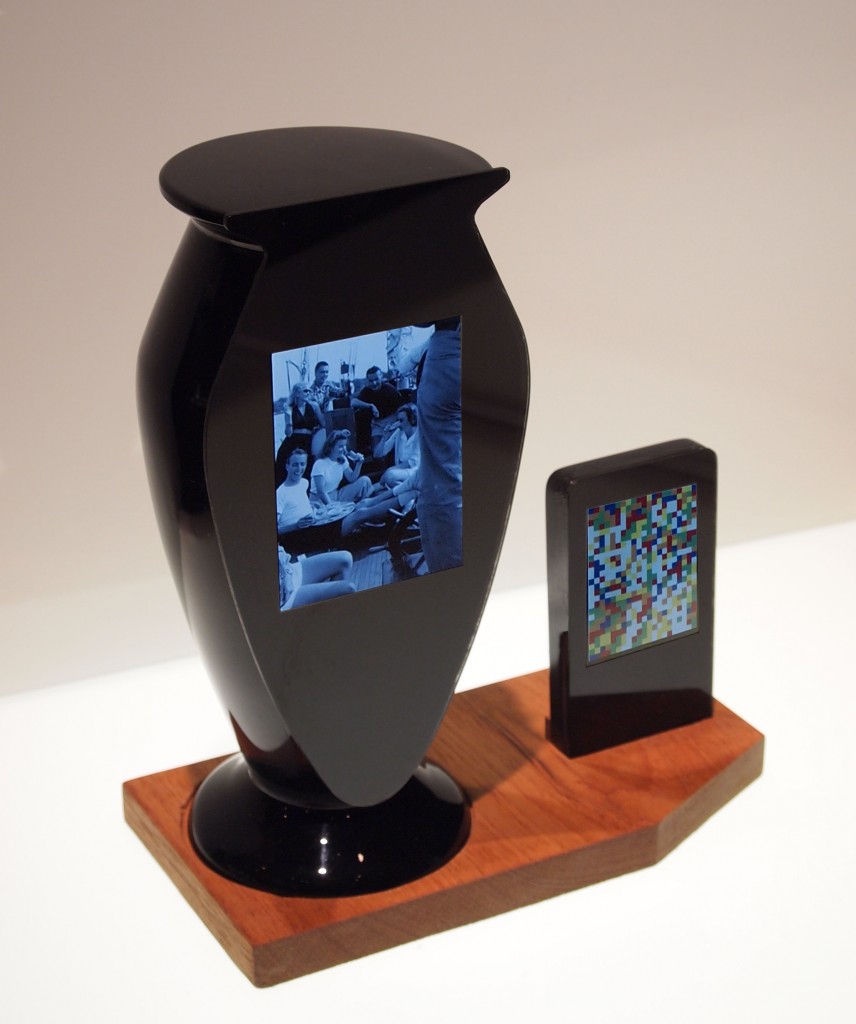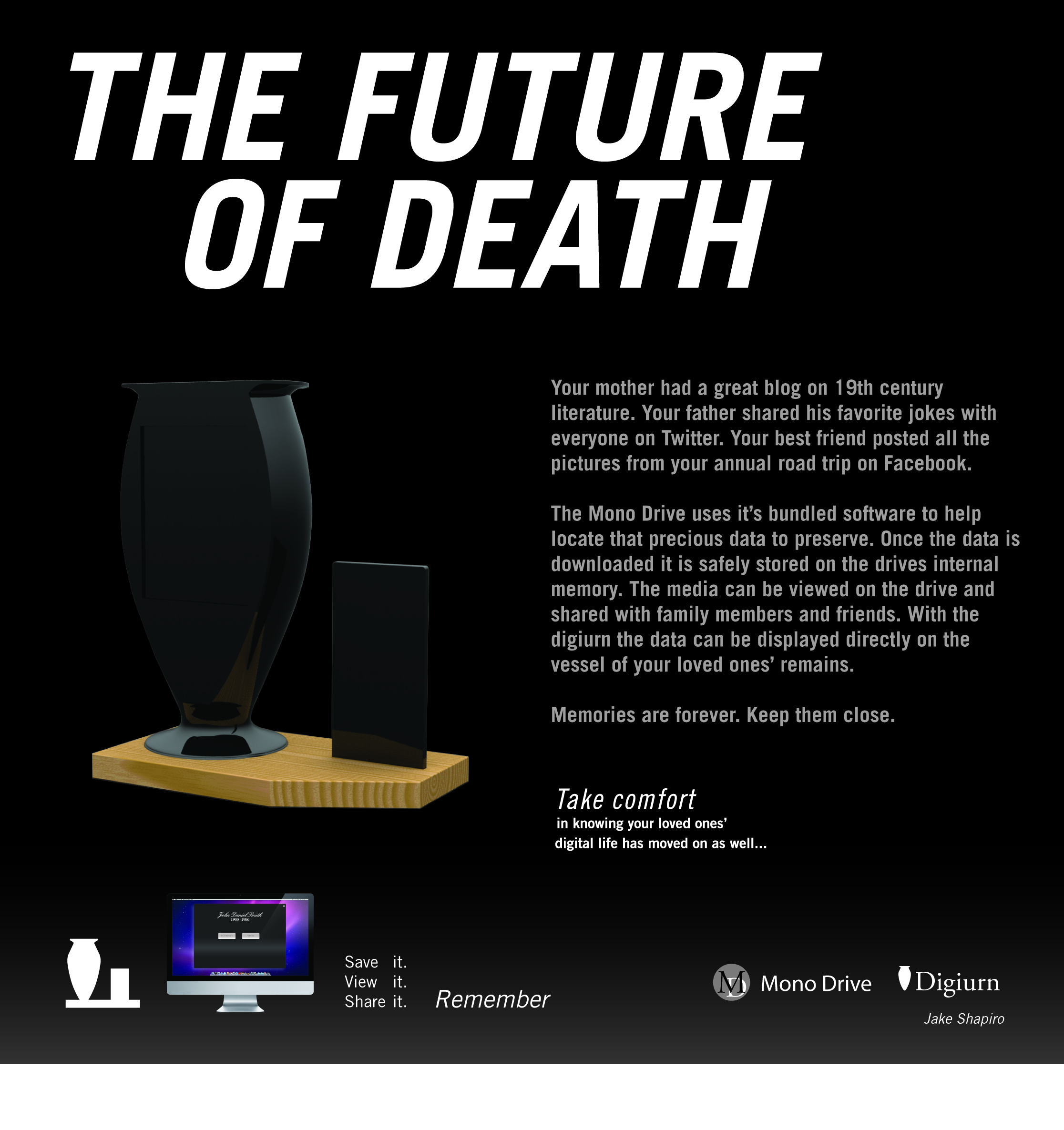Recent design school graduate Jake Shapiro of New York shared his thesis project with us: “The Future of Death” examines how our internet and social media oriented lives have and will continue to change the way we think about and deal with death and grief.
The project, for which Jake designed and constructed working prototypes, includes an external drive that downloads and preserves a loved one’s online data. The LED screen allows users to view content on the handheld device, which can also be docked with the Digiurn — an urn with a screen “where a loved one’s physical and digital existence can be preserved and viewed forever.”

Here’s a demo of the software:
Deathware from Jake Shapiro on Vimeo.
Managing digital assets and identities after death is certainly a timely topic. Some sites cater to password management and transmission upon death (such as Legacy Locker and Deathswitch), while Facebook has death memorial mode for personal profiles. This may, however, be the first effort to draw together a person’s social media output and combine it with the physical reality of the urn and what remains of the deceased within it.
(There is an irony here — online communities can be vastly dispersed with “friends” having never met in person. While grief with such deaths can be indisputably intense, these people will probably not attend the funeral or ever see the urn or grave. In other words, The Future of Death compiles content once shared with a potentially vast network and archives and relays it to only a select few — the family and perhaps close friends. It could easily have an online portal as well, of course — or people could simply go to the original blog, twitter account, and so forth, though the long-term availability of content at its native origin is uncertain.)
While the social media aspect of this is new, there is precedent with digital urns delivering photos, video and audio. Interestingly, search results for such urns mostly turn up cremain containers for pets, suggesting that consumers may consider the product a gimmick or otherwise inappropriate for human remains — fine for your dog, but your dad? No. (They do exist, however: One $900 urn inexplicably states that “This urn can be sealed airtight as well, for those who choose to bury their loved ones.” Why buy an urn with a digital display then hide it in the earth? Eek.)
Jake’s concept diverges not only with including social media content, but in the design itself. Check out these other digital photo urns:
They resemble tiny television sets, complete with remote controls, while the Digiurn is both a throwback and a distinctly modern piece, using the classical urn shape while set up like an iPod docking station.
How comfortable with LED screens and external drives are Grandma and Gramps? Hrm, well, it’s their children to whom such products would be marketed. But in a similar complication, compiling, storing and providing access to the deceased’s social media content assumes he or she participated in it. This is a very current concept for a market that largely won’t need it for another 30 to 70 years.
Of course, this is the future of death we’re talking about. Considering how the internet has evolved over the past 10 or even 3-5 years, who knows what the future will hold for technology, not to mention how it will transform grief. At the same time, as computer scientist Alan Kay so eloquently put it, the best way to predict the future is to invent it — and we can be sure designers like Jake Shapiro will do just that.


One reply on “Inventing the Future of Death”
brilliant work!!